This article was co-authored by Allison Romero, PT, DPT. Dr. Allison Romero is a Pelvic Health Specialist, Physical Therapist, and the Owner of Reclaim Pelvic Therapy in the San Francisco Bay Area. With over a decade of experience, Allison specializes in comprehensive pelvic physical therapy treatments for pelvic floor dysfunction. She holds a Bachelor of Science in Kinesiology and Exercise Science from Sonoma State University and a Doctor of Physical Therapy from the University of Southern California. Allison is a board certified Physical Therapist in California and is a member of the American Physical Therapy Association-Section on Women’s Health and the International Pelvic Pain Society.
There are 17 references cited in this article, which can be found at the bottom of the page.
This article has been viewed 33,805 times.
When your pelvic floor muscles are overly tight, you can have difficulty emptying your bladder or bowel, or you may experience pain, particularly during sexual intercourse. If you are having problems like these you should consult your doctor who may refer you for help from a physical therapist[1] Although women are more commonly associated with pelvic floor dysfunction, the problem can affect men too.[2] Luckily, there are a range of techniques and exercises you can learn that will help you loosen and relax your pelvic floor.
Steps
Stretching for Relaxation
-
1Get in Child Pose. Kneel on the floor and fold your body downwards so that your forehead rests comfortably on the ground and your bottom rests on the heels of your feet.[3] Take deep, even breaths. Let your arms rest on the floor above your head and feel your entire body relax and sink downwards into the ground. Focus on your abdomen as you fill your back, ribcage, and spine with air. Reach your breaths all the way down your tailbone. Exhale slowly and easily.[4]
- Use a yoga mat, blanket or carpet to help cushion your body in this position.
- Repeat the breathing cycles at least 5 times, or until you feel fully and deeply relaxed.
-
2Try the Happy Baby Pose. Lie on your back with your knees bent and your feet flat on the floor, shoulder-width apart. Bring both knees towards your chest, letting your hips sink into the floor as you do so. You can pull your legs gently into a deeper stretch by holding them underneath your knees. Hold this position and breathe deeply and evenly. Stay there for as long as it is comfortable before relaxing and returning your feet to the ground.[5]
- For a deeper stretch, gently rock your body from side to side as you hold onto your raised legs.
Advertisement -
3Stretch your adductors. To do this lie on your back on a comfortable surface with your knees bent. Gently let your knees fall to the side as you bring the soles of your feet together, forming a diamond with your legs. Breathe deeply and evenly as you feel your hips and knees sink towards the floor. Return to your starting position and then repeat.[6]
- If you feel too much discomfort from the pulling in your inner thighs or in your pubic bones, you can use pillows to support your knees.
- Adductors are the muscles found in the groin area or inner thigh and loosening these can help address pelvic floor tightness.[7]
-
4Stretch your piriformis. Lie on your back with your knees up and bent with your feet on the ground, spread shoulder-width apart. From here, pull your right foot up towards your chest, crossing it with your left knee. Rest it against the top of the left knee, just below the thigh. Reach your right hand between your legs to grasp your left leg underneath the knee and pull the left leg towards your chest. Hold for 30 seconds, breathing deeply and evenly, before relaxing. Repeat, on your other side.[8]
- The piriformis muscle is located at the back of the pelvis, stretching from the lower spine to the upper femur, or thighbone, on each side.[9]
Using Body Scanning to Relax Your Pelvis
-
1Lie down in a comfortable and quiet place where you can relax. Bend your legs and keep your feet flat on the floor, shoulder-width apart. Rest your hands gently on your lower abdomen, just below your belly button.[10]
- A yoga mat is a great option, but a firm sofa or mattress will work, too.
-
2Breathe deeply and evenly. Breathe in and out through your nose in a regular and calm rhythm. Direct your breath towards your abdomen. Focus on the rise and fall of your stomach and imagine that the muscles in your pelvis are sinking down, towards your feet.[11]
- Listening to calm music can help you settle into a deeply relaxed state.[12]
-
3Scan your body in your mind for areas of tension. Begin with your head. Notice your eyes, your mouth, and your jaw—are they tight? As you notice problem areas, relax them and feel the tension melt slowly away. Between each area of your body, return for a moment to focus on your breathing and the rise and fall of your abdomen. Continue this cycle, moving your attention down the entire length of your body from your head to your feet.[13]
- One of the primary benefits of using this approach is that it does not require you to tighten a pelvic floor that may already be tense or even painful.
- You can practice this awareness technique any time or place that you are able to focus and relax.
-
4Borrow progressive muscle relaxation techniques if necessary. As you scan your body, you may have difficulty noticing if an area is tight or relaxed. If this is the case, tense the muscle first, as this can often be easier to do than relaxing on command. Once you've tightened it, release it.[14]
- Using scanning with progressive muscle relaxation process can help you increase your awareness of where and when you are storing tension in your body.
Practicing the Pelvic Clock
-
1Rest your pelvis in the neutral 6 o'clock position. Lie on your back with your knees bent up and your feet set on the floor, shoulder-width apart. Imagine the line between your tailbone and the top of your pelvis represents the hands on a clock. Your tailbone points to the 6, while the top of your pelvis rests on the 12 of the clock face.[15]
- At rest you should feel your tailbone making contact with the floor while your lower back curves away from the ground slightly.
- Use a yoga mat or other firm but cushioned surface to avoid discomfort from the pressure on your tailbone.
-
2Rock your pelvis between the 6 and 12 o'clock positions. To do this, gently move your pelvis forward and backward by lifting your tailbone off the ground while leaning on the top, or 12 o'clock, region of your pelvis and lower spine. Relax, then flex in the opposite direction to push the tailbone downwards while curving your lower spine.[16]
- This is a gentle motion. Avoid squeezing your bottom muscles or tense your lower back.[17]
-
3Shift your weight and rotate left towards the 3 o'clock position. Slowly rotate your pelvis to the left as you rock gently. Focus and try to imagine the bottom of your pelvis rocking from the 5 o'clock, then the 4 o'clock, and finally the 3 o'clock position.
- Return to the neutral 6 o'clock position slowly and allow yourself a moment to rest.
- This technique helps you learn to feel and loosen up your pelvic floor muscles.
-
4Rotate your pelvis to the right towards the 9 o'clock position. Once again, move with focus as you rock your pelvis gently. Move it diagonally to reach the 7, the 8, and finally the 9 before returning to your neutral position.[18]
- This entire exercise should only take between 3-5 minutes to complete.
Identifying Your Pelvic Muscles
-
1Locate the pelvic floor muscles in your body. Your pelvic floor is made up by a group of muscles that supports the organs in your lower abdomen, including the bladder, bowel, and the uterus. Without these muscles, you could imagine having a very saggy pouch stretching down between your knees. Your pelvic floor muscles keep your insides securely in place in your abdomen.[19]
- The pelvic floor is a complex area of the body where muscles, nerves, and important internal organs are interconnected.
-
2Stop your urine flow in mid-stream. While using the bathroom, you can do a simple test to learn how to identify and connect your mind to your pelvic muscles. As you release your urine, see if you can stop your flow mid-stream.[20] Once you have stopped the flow, relax again to continue emptying your bladder.[21]
- Do not do this regularly when you already have a tense pelvic floor as it can worsen your problem.
- Contracting your pelvic floor muscles is also called a kegel.[22]
-
3Visualize your pelvic floor muscles. You can learn to identify your pelvic floor muscles by imagining that you are trying to prevent the flow of urine or passing gas. Choose a position that is comfortable for you (lying down, sitting, or standing) and keep your legs slightly apart so that your feet are roughly aligned with your shoulders. Relax your abdomen, bottom, and thighs and visualize yourself stopping the flow of urine. Relax and repeat, this time focusing your mind on your bottom as though you were trying to stop from passing gas. Then relax.[23]
- Repeat this cycle until you can identify and control your pelvic floor muscles.
- These exercises are used to strengthen a loose pelvic floor, so do not perform them frequently if your pelvic floor is already too tight.[24]
- This process should only be used sparingly to help you become aware of this area of your body.
Warnings
- These mindfulness and stretching techniques are not medical advice. If you have concerns about your health, seek medical attention.⧼thumbs_response⧽
- If any of these techniques seem to cause or worsen your pain and discomfort stop them immediately and consult your physician.⧼thumbs_response⧽
References
- ↑ https://www.womensrunning.com/2016/12/health-wellness/injury-prevention/4-moves-loosen-tight-pelvic-floor_68788
- ↑ https://my.clevelandclinic.org/health/diseases/14459-pelvic-floor-dysfunction
- ↑ http://www.yogabasics.com/asana/child/
- ↑ https://www.womensrunning.com/2016/12/health-wellness/injury-prevention/4-moves-loosen-tight-pelvic-floor_68788
- ↑ https://www.nafc.org/bhealth-blog/how-to-relax-your-pelvic-floor
- ↑ https://www.nafc.org/bhealth-blog/how-to-relax-your-pelvic-floor
- ↑ https://www.britannica.com/science/adductor-muscle
- ↑ https://www.nafc.org/bhealth-blog/how-to-relax-your-pelvic-floor
- ↑ https://www.health.harvard.edu/diseases-and-conditions/ask-dr-rob-about-piriformis-syndrome
- ↑ https://www.youtube.com/watch?v=zyVxM-gTvXI
- ↑ https://www.youtube.com/watch?v=zyVxM-gTvXI
- ↑ https://www.ncbi.nlm.nih.gov/pmc/articles/PMC3734071/
- ↑ https://www.mirecc.va.gov/cih-visn2/Documents/Patient_Education_Handouts/Progressive_Muscle_Relaxation_2013.pdf
- ↑ https://www.mirecc.va.gov/cih-visn2/Documents/Patient_Education_Handouts/Progressive_Muscle_Relaxation_2013.pdf
- ↑ https://www.youtube.com/watch?v=RwZuXdaylQ8
- ↑ https://www.ncbi.nlm.nih.gov/pmc/articles/PMC2565610/
- ↑ https://www.youtube.com/watch?v=RwZuXdaylQ8
- ↑ https://www.youtube.com/watch?v=RwZuXdaylQ8
- ↑ http://www.bbc.com/future/story/20180717-the-pelvic-floor-is-still-a-mystery-in-anatomy
- ↑ Allison Romero, PT, DPT. Pelvic Health Specialist. Expert Interview. 2 December 2020.
- ↑ http://www.pelvicfloorfirst.org.au/pages/pelvic-floor-muscle-exercises-for-women.html
- ↑ https://www.mayoclinic.org/healthy-lifestyle/womens-health/in-depth/kegel-exercises/art-20045283
- ↑ http://www.pelvicfloorfirst.org.au/pages/pelvic-floor-muscle-exercises-for-women.html
- ↑ https://www.nafc.org/kegel

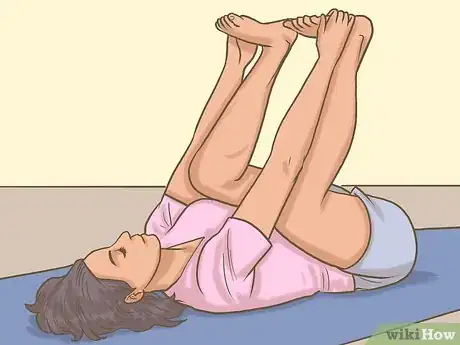


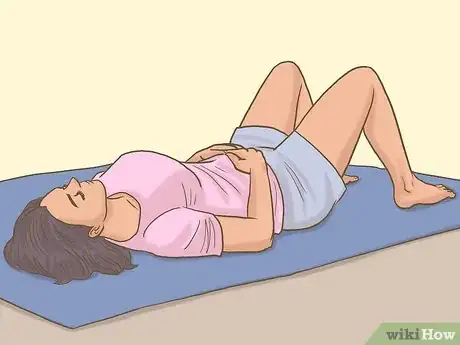
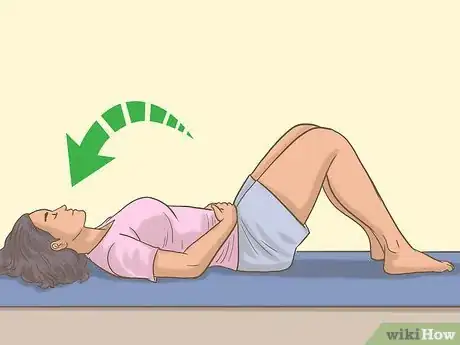



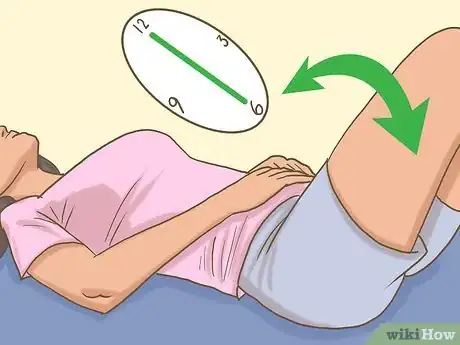
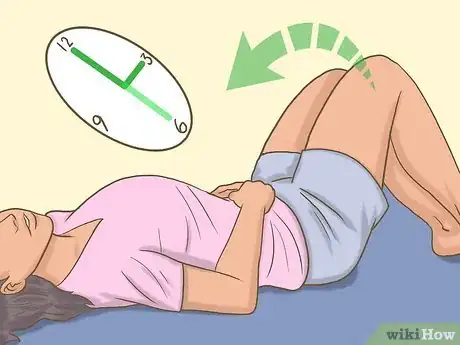
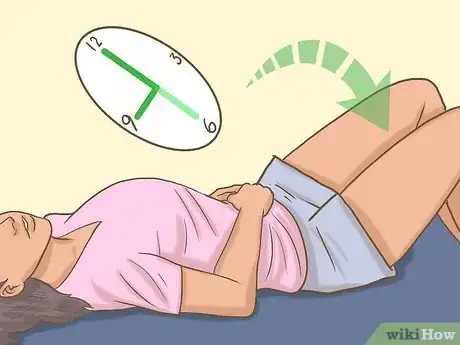










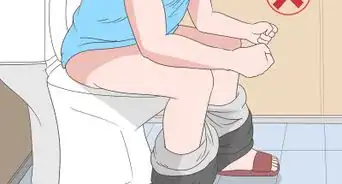






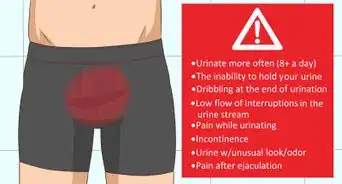














































Medical Disclaimer
The content of this article is not intended to be a substitute for professional medical advice, examination, diagnosis, or treatment. You should always contact your doctor or other qualified healthcare professional before starting, changing, or stopping any kind of health treatment.
Read More...